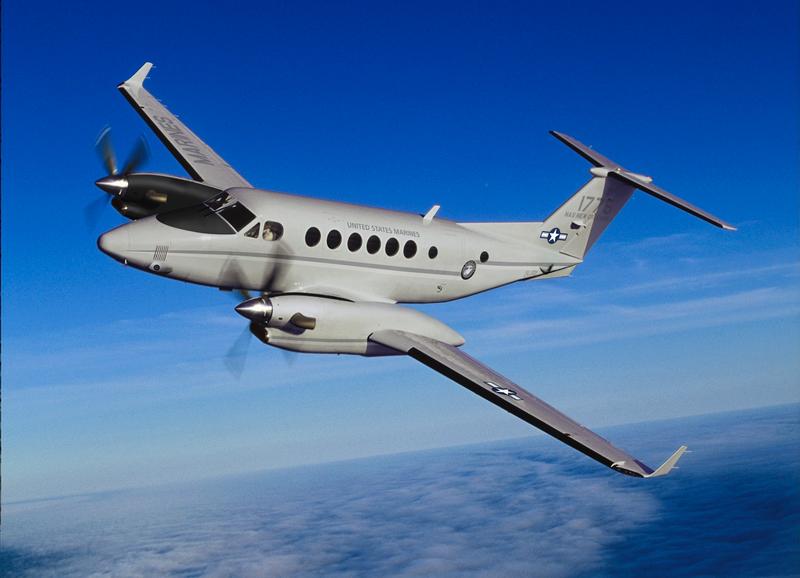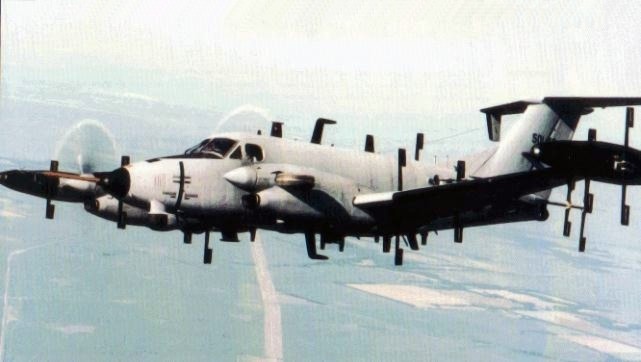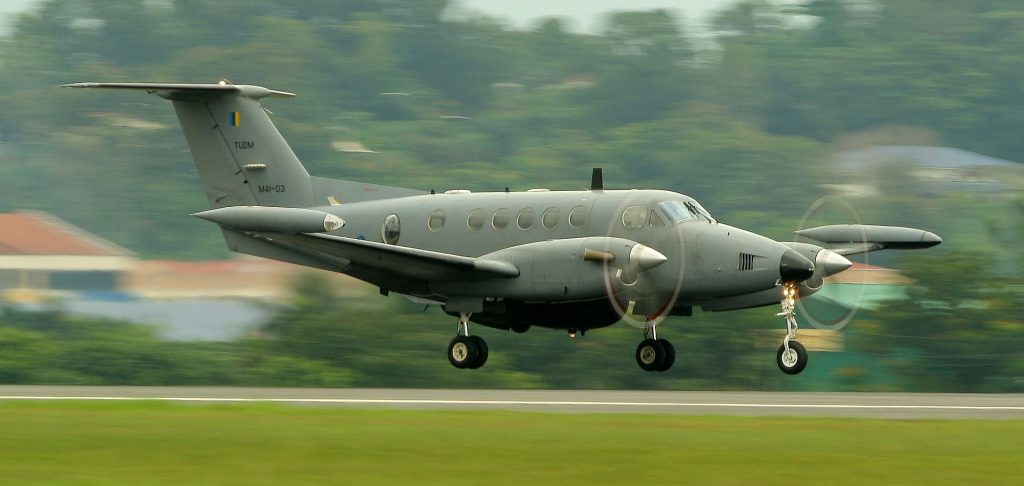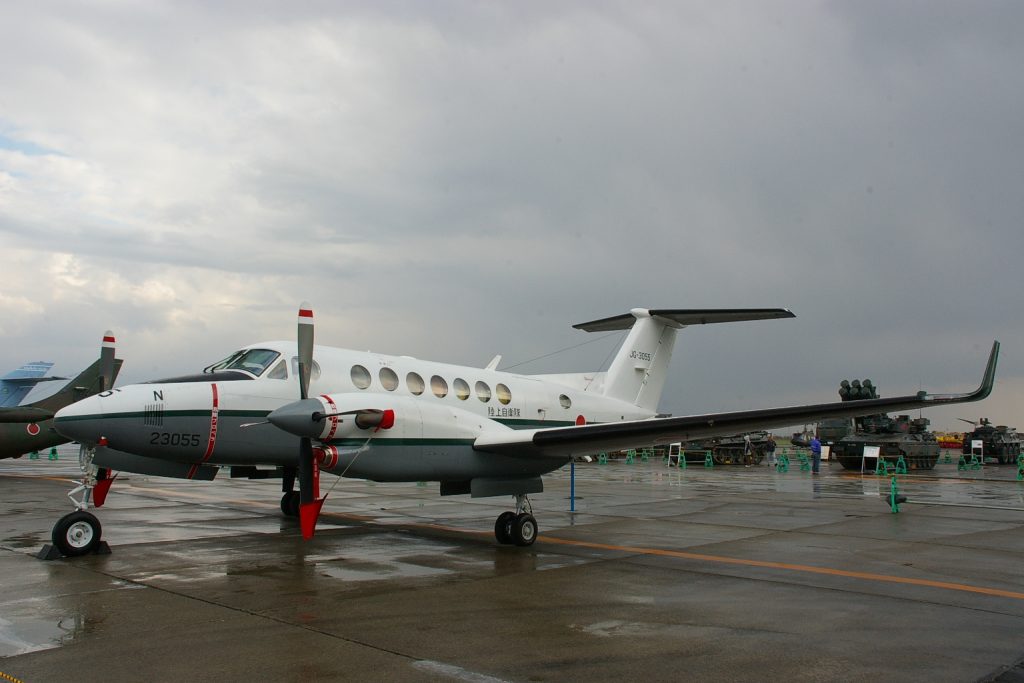The Beechcraft Super King Air represents one of the most successful and enduring aircraft designs in the world of general aviation.
Since its inception in the 1960s, the Super King Air has emerged as a trusted multi-purpose workhorse with a reputation for reliability, performance, and comfort.
Used in roles ranging from private business travel to military reconnaissance and everything in between, the Super King Air is a testament to the enduring value of quality aircraft design.
Contents
Origins & Design
The Super King Air is a product of the Beech Aircraft Corporation, now a division of Textron Aviation, a company renowned for its high-quality, reliable aircraft.
Read More: NC-131H Total Inflight Simulator – An Aviation Marvel
The Super King Air’s origins lie in the Model 90 King Air, a twin-turboprop utility aircraft introduced in 1964 as a step up from the piston-powered Queen Air.

The Model 200 Super King Air was first introduced in 1972 as an evolution of the Model 90 design.
With a longer fuselage, increased wingspan, and more powerful engines, the Super King Air offered enhanced capabilities and performance.
The aircraft features a T-tail configuration, which helps maintain stability and control at low speeds, a key attribute for an aircraft often used on shorter runways.
The Super King Air is powered by a pair of Pratt & Whitney Canada PT6A turboprop engines, known for their reliability and efficiency.
With a pressurized cabin, room for up to 13 passengers (though more commonly configured for six to eight in executive transport roles), and a flight deck featuring modern avionics, the Super King Air stands out as a versatile and comfortable aircraft.
Military Use
The Beechcraft Super King Air has found extensive use in military roles worldwide, often under different designations. In the United States, it has been used by all branches of the military and designated as the C-12 Huron.

These aircraft often serve in transport, reconnaissance, and training roles – a testament to the platform’s adaptability.
The Super King Air’s military applications are wide-ranging.
Read More: A2D Skyshark – Unfulfilled Promise of a Revolutionary Aircraft
They include personnel and light cargo transport, medical evacuation, reconnaissance, surveillance, target acquisition, and even drone control.
It’s been employed as a calibration aircraft for navigation aids and a multi-engine advanced trainer for pilots transitioning to twin-engine aircraft.
International militaries also make extensive use of the Super King Air, appreciating the aircraft’s durability, flexibility, and relatively low operating costs.
From the deserts of the Middle East to the jungles of Southeast Asia and the cold Arctic regions, the Super King Air has proven its worth as a military asset.

The Royal Air Force (RAF) has made extensive use of the Beechcraft King Air series, primarily in a training capacity.
The Beechcraft King Air B200 variant is particularly notable for its service in the RAF.
The B200s used by the RAF were equipped with military-standard avionics, allowing them to fulfil their role as multi-engine advanced flight trainers. They were designated as the King Air Avenger T1 in RAF service.
The primary role of these aircraft was to provide advanced pilot training, particularly for students transitioning from single-engine aircraft to multi-engine aircraft.
The RAF’s No. 45 Squadron, part of No. 3 Flying Training School based at RAF Cranwell, was the primary operator of the Avenger T1.
Here, trainee pilots would learn a range of skills, including crew cooperation, low-level navigation, and operating in a complex aircraft environment.

In addition to its training role, the Avenger T1 was also used for transport and liaison duties as needed.
In more recent years, some King Airs have been modified and employed by the RAF in other roles, including surveillance and reconnaissance.
The aircraft’s inherent versatility and adaptability have made it a valuable asset to the RAF.
Read More: A Guide to Radar Warning Receivers (RWR)
In 2020 the Textron Aviation Defense Beechcraft AT-6 Wolverine light attack turboprop would replace the King Air T1 in the basic fast-jet training role, marking an end to the RAF’s use of the King Air in this capacity.
Variants
Over the years, Beechcraft has introduced numerous variants of the Super King Air, each with its unique features and improvements.
The King Air B200, introduced in 1981, offered upgraded engines for improved performance and efficiency, while the B200GT, introduced in 2007, featured even more advanced engines and a fully integrated glass cockpit.

The King Air 250, the latest version of the B200 series, brings further improvements in performance and avionics, along with the addition of composite winglets and propellers for increased efficiency.
The King Air 300 series, introduced in 1983, increased cabin size, wing area, and fuel capacity, coupled with more powerful engines for improved high-altitude performance.
The 350i, the current model in this series, features a luxurious and quiet cabin, advanced Pro Line Fusion avionics, and seating for up to 11 passengers.
The Beechcraft King Air 350ER is an extended range (ER) version of the King Air 350, and it’s known for its versatility, efficiency, and durability. It was designed to meet a wide variety of mission requirements without sacrificing the performance characteristics for which the King Air line is known.
The 350ER, like the standard 350 models, is powered by twin Pratt & Whitney Canada PT6A-60A turboprop engines. However, the 350ER is equipped with additional fuel capacity, which extends its range to over 2,300 nautical miles, a significant increase from the standard 350’s range.

The 350ER features a comfortable, well-equipped cabin that can be configured to accommodate up to 11 passengers in its standard layout but can also be equipped for a variety of specialized missions.
This makes the aircraft an excellent choice for roles such as air ambulance services, reconnaissance, surveillance, and transport.
The aircraft is equipped with the Rockwell Collins Pro Line Fusion avionics suite, providing pilots with advanced navigation, communication, and situational awareness capabilities.
The avionics suite includes large-format touchscreen flight displays, synthetic vision technology, and advanced flight management capabilities.
In the military and special missions context, the King Air 350ER has been adopted by several countries for surveillance, reconnaissance, transport, and other roles. Its flexibility, combined with its range and endurance, make it an ideal platform for these tasks.

Beechcraft also offers the 350ER in a special mission configuration, further enhancing its suitability for these roles.
Beechcraft also sells other Special Mission variants of the Super King Air, outfitted for various roles like surveillance, air ambulance, flight inspection, and more.
These variants underscore the Super King Air’s versatility as a platform capable of being tailored to a wide array of specific needs.
How fast is the Super King Air?
The Super King Air also known as the King Air 250 has a maximum speed of 355 mph. With a durable and versatile design, it excels in short-field performance. It has a capacity of ten passengers thus competing with small business jets offering a unique combination of speed, durability, and comfort. Its maximum cruise speed is 310 ktas allowing it to cover distances efficiently.
Conclusion
The Beechcraft Super King Air is a triumph of aviation design, embodying versatility, reliability, and performance in a single platform.
Its success can be measured not just in the sheer number of aircraft produced – over 3,000 as of 2022 – but in the diversity of roles, it has served and continues to serve.

The Super King Air’s legacy is a testament to Beechcraft’s commitment to quality and innovation, as well as to the robustness of the original design.
Read More: Zeppelin-Staaken R.VI – The German Giant
Despite numerous improvements and variants over the years, the core attributes of the Super King Air have remained consistent, ensuring its enduring appeal and relevance.
In civilian, business, and military roles around the globe, the Beechcraft Super King Air has proven its worth time and again.
Its longevity and ongoing production make it a true icon of aviation, a testament to the enduring relevance of a well-conceived and well-executed aircraft design.
Whether serving on the front lines of military operations or in the quieter realms of private travel, the Super King Air’s reputation is firmly established.
It is, without a doubt, a King among aircraft.
If you like this article, then please follow us on Facebook and Instagram.
Specifications
| 250 | 350i | 350ER | |
|---|---|---|---|
| Crew | 1–2 | ||
| Capacity | 10 | 11 | |
| Length | 43 ft 10 in / 13.36 m | 46 ft 8 in / 14.22 m | |
| Span | 57 ft 11 in / 17.65 m | ||
| Height | 14 ft 10 in / 4.52 m | 14 ft 4 in / 4.37 m | |
| Cabin L × W × H | 16’8″ × 4’6″ × 4’9″ 5.08 × 1.37 × 1.45 m | 19’6″ × 4’6″ × 4’9″ 5.94 × 1.37 × 1.45 m | |
| Engine type (2×) | PWC PT6A-52 | PWC PT6A-60A | |
| Power or thrust | 850 shp / 625 kW | 1,050 shp / 783 kW | |
| Maximum cruise | 310 kt / 574 km/h | 312 kt / 578 km/h | 303 kt / 561 km/h |
| Ferry range | 1,720 nm / 3,185 km | 1,806 nm / 3,345 km | 2,670 nm / 4,945 km |
| Takeoff | 2,111 ft / 643 m | 350i: 3,300 ft / 1,006 m | 4,057 ft / 1,237 m |
| Ceiling | 35,000 ft / 10,668 m | ||







